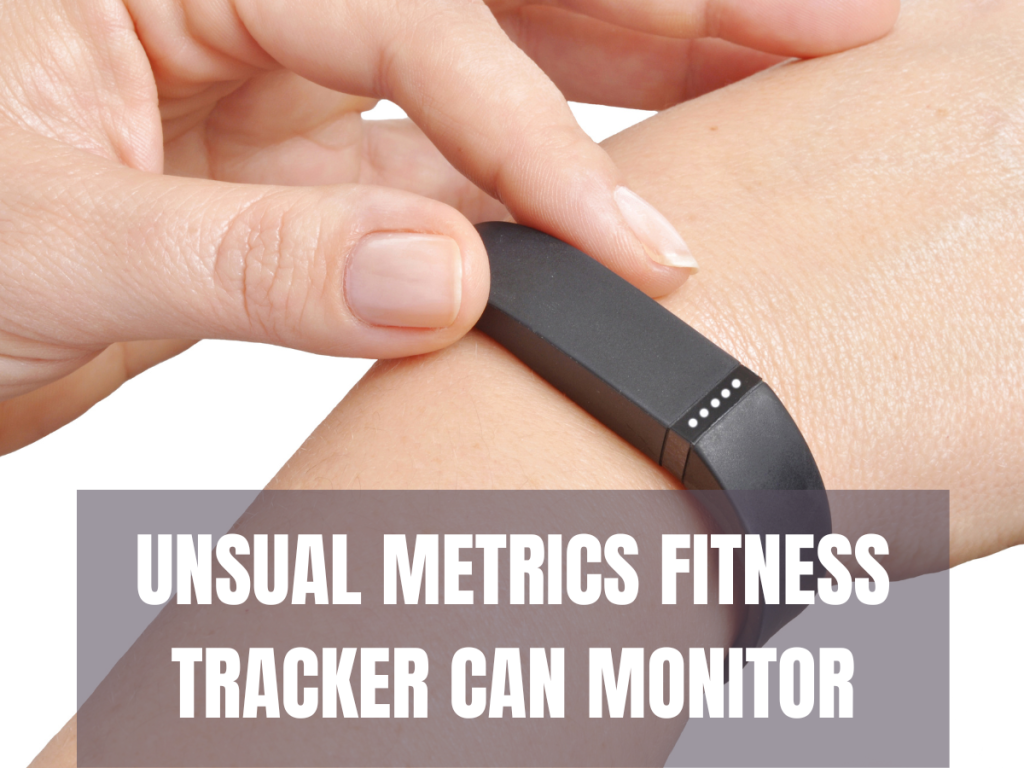Fitness trackers have become a popular tool for millions of people worldwide, helping them stay motivated and accountable as they work towards their health and fitness goals. While most of us are familiar with the basic functions of these devices, such as counting steps and measuring heart rate, there are several lesser-known metrics that fitness trackers can monitor.

In this article, we delve into some of the unusual metrics your fitness tracker can track, providing you with unique insights into your health and well-being.
1. Sleep Stages
One of the more advanced features available in some fitness trackers is the ability to monitor sleep stages. These devices use a combination of accelerometer data and heart rate variability to determine when you are in light, deep, or REM sleep.
According to the National Sleep Foundation, the average adult should aim for 20-25% deep sleep and 20-25% REM sleep per night. Know more about stages of sleep.
Understanding your sleep stages can provide valuable information about the quality of your rest, allowing you to make adjustments to your sleep environment or habits to improve your overall sleep quality.
2. VO2 Max
VO2 max is a measure of your body’s ability to utilize oxygen during intense exercise, and it is often considered the gold standard of cardiovascular fitness.
A study published in the Journal of Sports Science and Medicine found a strong correlation between VO2 max and performance in endurance sports. While typically measured in a lab setting, some fitness trackers can estimate your VO2 max using data from your heart rate and physical activities.
Tracking this metric over time can help you gauge the effectiveness of your workout regimen and make necessary adjustments to reach your fitness goals.
3. Menstrual Cycle Tracking
For women, some fitness trackers offer menstrual cycle tracking features, allowing you to monitor your cycle, predict your next period, and identify your fertile window.
This information can be useful for those looking to conceive or simply seeking a better understanding of their bodies. By inputting data about your cycle and symptoms, you can also identify patterns and potential irregularities that may warrant a discussion with your healthcare provider.
Stress Levels
Stress has a significant impact on our overall health and well-being. The American Psychological Association reports that 77% of Americans regularly experience physical symptoms caused by stress.
https://www.apa.org/news/press/releases/stress/2017/state-nation.pdf
Some fitness trackers can help you monitor your stress levels by analyzing your heart rate variability (HRV). By tracking your HRV, you can identify periods of high stress and take steps to manage it, such as practicing mindfulness, deep breathing, or other relaxation techniques.
Skin Temperature
Though less common, some fitness trackers include sensors that can monitor your skin temperature. According to a study published in Nature Scientific Reports, skin temperature can be a useful indicator of internal body temperature during exercise.
Tracking your skin temperature may help you identify patterns that could indicate an underlying health issue or the need for adjustments in your exercise routine.
Altitude and Barometric Pressure
For outdoor enthusiasts, some fitness trackers offer altitude and barometric pressure tracking. These metrics can be useful for tracking your performance during activities like hiking, mountaineering, or trail running.
Additionally, monitoring barometric pressure changes can help you predict weather changes, allowing you to better prepare for your outdoor adventures.
Swimming Metrics
If you’re a swimmer, you’ll be pleased to know that some fitness trackers can track your swimming metrics, such as laps, distance, pace, and strokes per minute. A study published in the Journal of Sports Sciences found a strong relationship between stroke rate and swimming performance.
By monitoring these metrics, you can analyze your performance, identify areas for improvement, and track your progress over time.
Conclusion
Fitness trackers offer a wealth of information beyond just steps and heart rate. By exploring these unusual metrics, you can gain a deeper understanding of your health and well-being, allowing you to make informed decisions and adjustments to your lifestyle.
As technology continues to advance, we can expect even more unique features and insights from our fitness trackers, helping us to lead healthier, more balanced lives. So, go ahead and unlock the full potential of your fitness tracker, and don’t forget to share these fascinating insights with friends and family.
